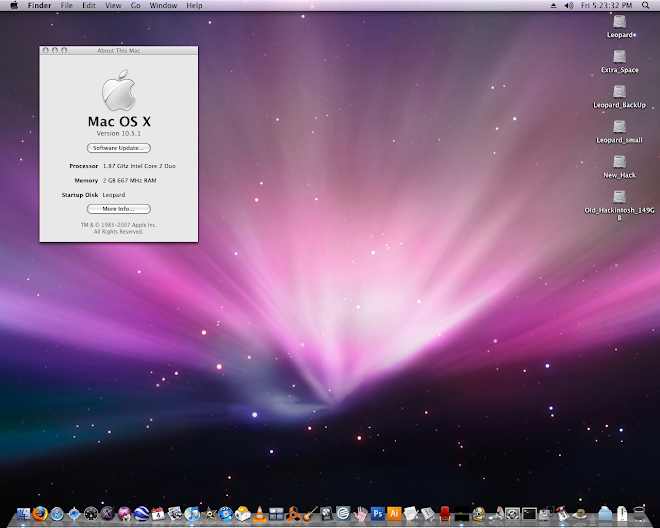But the P4P800 is an 865 chipset and that didn't have drivers for video. So I couldn't get dvd's to play correctly. It didn't have Quartz Extreme or Core Image.
So I did my research and decided on the P5W DH Deluxe by ASUS. It seemed that it would last long enough for my needs. I got an xfx 7300 gs video card (pci extreem). I got a core2duo 6300. and 2 gigs of 800 ram. I had a couple of 180 sata drives laying around and I bought an apple compatible dvd burner from pioneer.
Well everything just worked and it was fast. I used the Jas 10.4.8 install dvd and then later updated to 10.4.9. That was a bit harder as I hadn't learned how to repair permissions for changing patched kernels in the Terminal. Here are the kernel repair commands for the terminal
"sudo -s
"password
"chmod 644 /mach_kernel
"chown 0:0 /mach_kernel (enter)
and for fixing permissions after changing out kexts ( a absolute must when using a hackintosh) I use these commands:
I also like to repair the kext cache so I would enter " -f " along with the "-s "
When it finishes loading I then make the volume writable.
This was very important, if I didn't make the volume writable the changes would not be made.
So I would enter "/sbin/fsck -fy "(enter)
Then I would enter "/sbin/mount -uw / "(enter)
"chmod -R 755 /System/Library/Extensions/* "(enter)
"chown -R 0:0 /System/Library/Extensions/* "(enter)
then I hit exit
I actually had to learn these commands for working on my leopard installation. When I was just using Tiger I would install two versions of the same Tiger. This would allow me to fix one with the other. I would just bounce from one install to the other to get all of my work done.
But once Leopard came out for some reason the diskutility wasn't repairing my permissions correctly so I had to learn how to fix them in in single user mode.


No comments:
Post a Comment